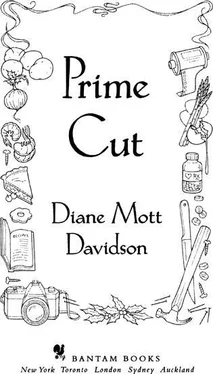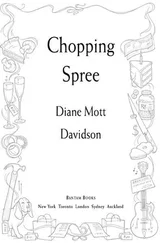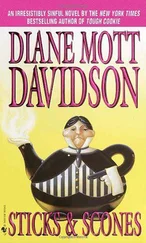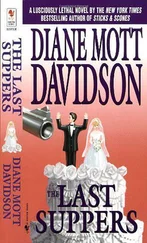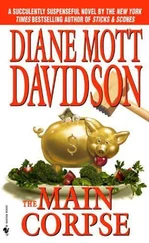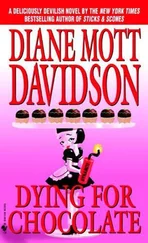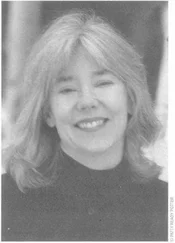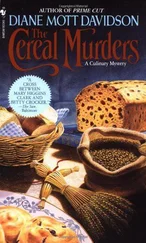She motioned to her cup, which meant I was supposed to pour more coffee into it, which I did. She sipped some of her drink, then clinked the cup down in the saucer. “Just outside where that window was situated, there used to be a small stand of pine trees that obscured the view of the mountains. In the late seventies, the pine beetles destroyed them. So Leah had the trees taken out. Then Bobby Whitaker had the bright idea to put in large windows here, so a person in the kitchen could see the mountains. Leah hired Gerald to tear out the wall and put in windows. But he was fired once he’d torn down the wall.”
I fingered the edges of the wood, where dried glue protruded roughly from the edge next to the old plastered wall. “Why was the old wall plastered instead of being made of logs?”
She sighed impatiently. “Don’t you remember the exhibit we had on log cabins at the museum?” I shook my head. She said, “It’s all that butter clogging up your mind, Goldy!” I smiled brightly as she continued: “These old cabins are just made of trees, laid on their sides, stacked, and plastered. Inside the cabin, for some living areas such as the kitchen, the early builders would cover the logs with homemade two-by-fours. Then they put up diagonal lath strips, and covered the strips with three coats of plaster. Eliot pulled it all out. He made a terrible mess.” She touched her temple as if the thought of Gerald Eliot had brought on a sudden headache.
“A terrible mess,” I repeated, staring at the plywood. Finally I saw what I seemed not to have noticed the week before. Or had something changed since then? Along the corner nearest the stove, the wood was compressed and broken, as if Gerald had glued the plywood over the opening, then decided to pry it open to do something else. Near the corner, he’d hammered in a finishing nail.
“What happened here?” I asked. “It’s like he glued the plywood in place, then decided to move it.”
Hanna peered at the place I was indicating. “I don’t know what stage of construction Gerald was in when he was fired,” she said, “and I told the police that.” She waved her cup dismissively. “Gerald became secretive after he found what Leah’s grandfather hid in the wall.”
“What?”
“Oh, yes,” said Hanna calmly. “One day I was out here with Ian and Leah, planning this shoot. Gerald found the gun that Charlie Smythe had hidden in the wall before he put up the lath strips and coated them with plaster.”
“Gerald pulled out a hidden gun?” I asked, nonplussed.
Hanna’s fingers waggled at the wall. “In there. Can you imagine? How was he going to get a weapon out quickly, if he actually needed it to protect his family?”
Something flickered in Hanna’s dark eyes. “It took Gerald a week of destruction just to find that antique rifle. Although I was impressed, of course, that that old criminal Charlie Smythe had taken such care to wrap his rifle so well in oilcloth. It was ready to go out and shoot somebody with! I mean, if that’s what you wanted to do.”
Chapter 18
“Did you all tell the police Gerald found a rifle?” I asked breathlessly.
“Of course we did.” She tilted her head. “Leah has it hung out in the living room. Haven’t you seen it? Of course, 7 wanted it for the museum. You must try to talk her into donating it, Goldy. No one will ever see it, way out here in Blue Spruce.”
The Winchester. Yes, of course I had noticed the rifle on the wall.
Hanna narrowed her eyes. “Leah kept asking, Why would an outlaw hide his rifle in a wall?”
But of course I did know. Or I thought I did. Tom had concealed his extra Colt .45 and his own Winchester ‘94 behind a false wall he’d built in our garage. Then, if someone broke in, his valuable firearms wouldn’t be stolen. Or be in the hands of someone who could use them for crime. But it didn’t take a week to get to those weapons; Tom’s rifle could be accessed by removing a rectangle of drywall in mere minutes.
To Hanna I said, “That was it? The rifle was the only thing Eliot found in the wall?”
“I think so.” She shrugged, a tiny gesture of impatience that I interpreted as we need to get on with our business . “Now, we need to talk about the schedule for the shoot,” she reminded me. When I nodded, she pushed her cup and saucer away, pulled out a black loose-leaf notebook from the dark briefcase, and hooked black half-glasses over her nose. This woman’s fashion palette was so limited, she might as well have worked for a mortician.
The somber notebook held about twenty plastic-encased pages. Hanna flipped through the sheets, each of which contained a photocopied sketch of that page’s layout in this publication, the first of three Christmas catalogs that P & G would be mailing to its customers. Hand-drawn outlines of bed and table linens, jewelry, shoes, belts, and handbags, splashed across the accessories section. Ian had finished up the still-life shots the first week, before André came on board, Hanna told me. The proofs for these pictures were paper-clipped onto the sketches.
Then came the fashion sketches, with printed notes about what shot should fill each section. Santa in chair with boy in reindeer pajamas. Yellow bikini & blue maillot for cruise section . Snugged within each plastic envelope were three or four flash-lit Polaroid shots of the items to be modeled. Suspended from coat hangers, the cruise outfits, nightwear, chinos, sweaters, blouses, coats, and dresses looked painfully unglamorous. Hanna flipped through to show three pages of women’s clothes, two of men’s. Each page represented a day of shooting. There were only two pages left. Barring any more equipment failures, the P & G Christmas shoot should finally finish by the next day, Thursday, or, worst-case scenario, Friday. André had been making between six and eight hundred dollars a day, depending on how many people showed up for each meal. I closed my eyes. I would have preferred that André be alive, of course. But I’d known him long and well enough to be sure he would have been glad that I was the one taking over his booking. I also knew he would have rejoiced that this new income would be enough for me to recoup the money lost to the Harrington and Hardcastle refunds.
To my surprise, I’d recognized the outfits from the two pages with Santa and the children. Even I had to admit these pedestrian outfits had looked pretty good when worn by adorable kids. Especially when those kids were being visited by Santa himself! The trick, of course, lay in seeing that the clothes were still the same bland outfits. Most folks, of course, were fooled. And that was why models were paid so much. It was also, I reflected sadly, why bad caterers—who only care about presentation and not the quality or taste of their food—were able to stay in business. If I ever resorted to that kind of cheating, I hoped to be stripped of my spoons.
Hanna pointed to the lingerie page. She explained that a black push-up bra with matching panties, a white lace bra and half-slip, and a pastel green granny-style nightgown were to be the outfits of the day. Zowie! I was so glad I hadn’t brought Arch. I told Hanna we were going to offer girdle cakes at the coffee break.
“That’s pancakes to you and me,” I translated.
“Fine, then. But at least now you are aware there will only be today and tomorrow or Friday for catering. Depending on how things go. So, that’s it. I’ll take more coffee, if you don’t mind.”
I poured her a refill and commented, “You seem to manage the uncertainty of when you’ll be shooting pretty well.”
Her eyes glimmered with seriousness. Her thin lips set in a slight scowl. “I need to work. So I have learned to deal with people’s idiosyncrasies. Or at least, I make a very good show of working around people’s weaknesses,” she said proudly.
Читать дальше
